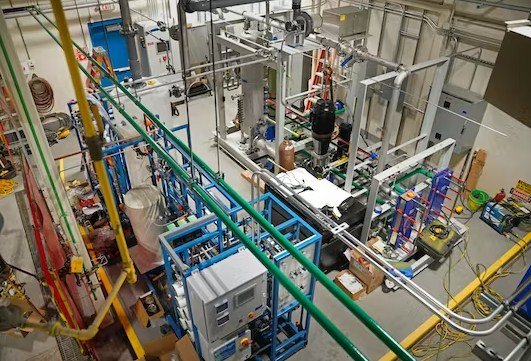North Dakota is not usually known for its technology sector, but that may change soon. The state is one of the 31 regions that have been designated as Tech Hubs by the U.S. Department of Commerce. This means that North Dakota will receive federal support and funding to boost its innovation and economic growth in critical and emerging technologies.
What are Tech Hubs and why are they important?
Tech Hubs are regional centers that have the potential to become globally competitive in the technologies and industries of the future. They are part of the President’s Investing in America agenda, which aims to strengthen U.S. economic and national security by fostering technology-driven development.
Tech Hubs bring together diverse public, private, and academic partners into collaborative consortia that focus on driving inclusive regional growth. They leverage their existing innovation assets, such as research institutions, industry clusters, and workforce development programs, to build the workforce of the future, enable businesses to start and scale, and deploy and deliver critical and emerging technologies.
Tech Hubs are expected to create new, good jobs for American workers at all skill levels, equitably and inclusively. They are also expected to increase the U.S. market share and leadership in key technology areas, such as artificial intelligence, biotechnology, quantum computing, and advanced manufacturing.
How did North Dakota become a Tech Hub?
North Dakota applied for the Tech Hubs program through a consortium led by the North Dakota Department of Commerce and the North Dakota State University. The consortium included more than 40 partners from various sectors, such as education, research, industry, government, and community organizations.
The consortium proposed a vision to transform North Dakota into a tech hub for unmanned aerial systems (UAS), also known as drones. UAS are a critical and emerging technology that have applications in various domains, such as agriculture, energy, defense, and public safety.
North Dakota has a strong foundation for UAS innovation, as it is home to the first and only FAA-approved UAS test site, the Grand Sky UAS Business and Aviation Park, the Northern Plains UAS Test Site, and several UAS companies and research centers. The state also has a robust UAS education and training system, with programs offered by the North Dakota State University, the University of North Dakota, and other institutions.
The consortium’s plan is to leverage these assets and resources to create a UAS ecosystem that will attract and retain talent, foster entrepreneurship and investment, and accelerate technology development and commercialization. The plan also includes strategies to address the challenges and opportunities of UAS integration, such as safety, security, privacy, and public acceptance.
What are the benefits and opportunities of being a Tech Hub?
As a Tech Hub, North Dakota will receive a strong endorsement from the federal government for its UAS vision and strategy. The Tech Hub designation will also make the state eligible to apply for the Tech Hubs Phase 2 Notice of Funding Opportunity, which will award implementation grants to 5-10 Tech Hubs, with each receiving approximately $40-$70 million across 3-8 projects.
The Tech Hub designation will also increase the visibility and recognition of North Dakota as a leader and innovator in UAS technology. This will help the state attract more partners, investors, customers, and media attention to its UAS ecosystem. The Tech Hub designation will also create more opportunities for collaboration and learning among the Tech Hubs network, which spans across 25 states and covers a wide range of technology focus areas.
The Tech Hub designation will ultimately benefit the people and communities of North Dakota, as it will create more jobs, income, and economic activity in the state. It will also enhance the quality of life and well-being of the residents, as UAS technology can improve the delivery of essential services, such as health care, education, and emergency response.

